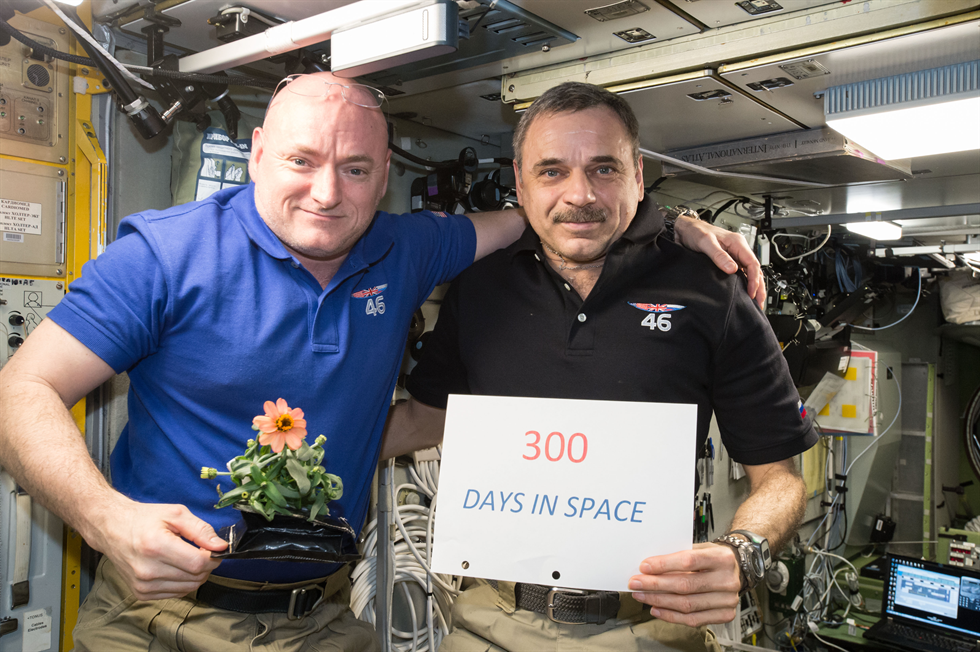Scott Kelly returns, but science for NASA’s Journey to Mars continues
NASA astronaut Scott Kelly paved the way for future missions when he embarked on a one-year mission in space along with Russian cosmonaut Mikhail Kornienko. Kelly will be the first American to complete such a long-duration mission, and one of the first humans in more than 15 years to embrace the challenge. Russian cosmonaut Sergei Avdeyev was the last person to spend a year in microgravity in 1999. The 2015-2016 mission builds upon that past knowledge.
While every space mission is historically significant, this one stands out. Twenty-first century technology, approaches and techniques were employed. NASA has partnered with other space agencies to conduct numerous human research investigations to see how the human body changes during a year in space. Two of these investigations, which deal with the effects of long spaceflights on the human body, are fluid shifts and field tests. Fluid shifts deal with changes in the visual system and field tests with post-landing capabilities of astronauts immediately after long spaceflights. These investigations break down technological and logistical barriers while increasing international collaboration. The mission unites world-renowned scientists to conduct groundbreaking research on the human body.
“Working with additional partners is not necessarily easy because different countries have particular processes they follow,” said John Charles, chief scientist of the NASA Human Research Program, who has a doctoral degree in physiology and biophysics. “Differing approaches to solving problems must be considered, but when new processes are learned that can benefit future missions or reduce duplication of tasks, that is considered a successful partnership.”
This collaborative effort tests not only the human body, but also the integration of partners, technologies and techniques. The good news is that it is working so well it will be a model for future long-duration missions.
Preparing for a three-year journey to Mars requires innovative thinking, which is why NASA involved the best and brightest investigators from the United States and the International Space Station partner space agencies. Their expertise, paired with the new data collected from this mission, will help NASA create appropriate countermeasures to safeguard future astronauts against the stresses of space to the human body.
Coinciding with the one-year mission is the twins study. For the first time, identical twins are providing opportunities to study the effects of spaceflight at a molecular level. Scott’s identical twin brother Mark, himself a former astronaut, is spending the year on Earth, enabling researchers to focus on a near-identical comparison of the brothers’ genomics and omics profiles, something never captured before in human space research. This new field of study, akin to personalized medicine, produces so much information and data to analyze that it’s hard to imagine.
“The mission will continue even after Scott returns,” said Charles. “For the one-year mission research, we will be collecting post-flight medical data three months and six months after he is back on Earth. For the twins study research, we will continue to collect data as far out as a year after his return. The post-flight data are as important as the in-flight data to help us learn how to send humans safely to Mars and return them safely to Earth.”
To date, NASA has approximately 15 years of data from the space station about how space affects the human body during six-month missions. Now the Human Research Program is building on that foundation by proposing more international collaboration on future one-year space station missions. This will help evaluate the effectiveness of the countermeasure approaches being developed to offset spaceflight-related changes to the body during a mission to Mars.
“We would be happy to see no difference in a six-month mission versus a year-long mission,” said Charles. “But we do anticipate changes. This was the first time we have done in-depth omics profiles on twins. The longer a human is in space, the more that individual is exposed to risks such as radiation and weightlessness. Our integrated team of researchers are addressing those risks to create countermeasures to enable more advanced space travel. By integrating international collaborative science, and thus emphasizing the ‘I’ in International Space Station, our combined efforts can yield the biggest benefit.”
NASA’s Human Research Program enables space exploration by reducing the risks to human health and performance through a focused program of basic, applied and operational research. This leads to the development and delivery of: human health, performance and habitability standards; countermeasures and risk-mitigation solutions; and advanced habitability and medical support technologies.
Amy Blanchett
Laurie Abadie
NASA Human Research Engagement & Communications








